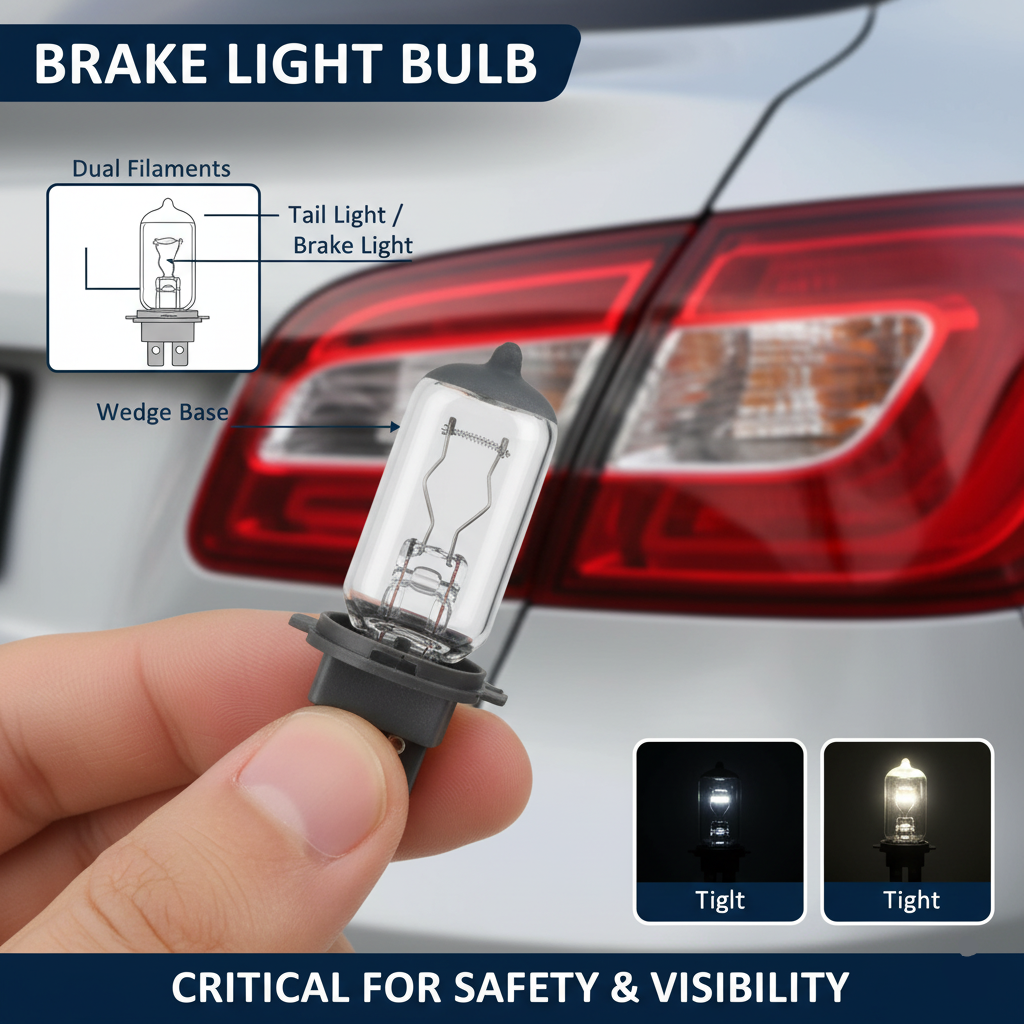Kingsgrove Branch:
Brake Light Bulb

G'day! You're sitting in traffic, and the bloke behind you gives you a friendly toot and points to the back of your car. Or maybe a mate following you home says, "Did you know your brake light is out?"
A blown brake light bulb is more than just a minor annoyance; it’s a fair dinkum safety issue. It's the main way you tell the driver behind you that you're slowing down. A faulty one is a leading cause of rear-end prangs, and it's also a guaranteed way to get pulled over by the coppers and cop a fine and a defect notice.
The good news? For most cars on Aussie roads, replacing a brake light bulb is a dead-easy DIY job you can sort out in minutes.
What's the Go with a Brake Light Bulb?
Your average brake light globe is a clever two-in-one unit. It's what's known as a "dual filament" bulb.
Inside the glass, there are two separate wires (filaments).
- The Tail Light Filament: This is a low-wattage filament that provides a dim, constant red light whenever you have your headlights on, so people can see your car at night.
- The Brake Light Filament: This is a high-wattage, much brighter filament. It only lights up when you press the brake pedal, creating that bright, unmissable signal that you're stopping.
This is why sometimes your tail light will work, but your brake light won't (or vice versa)—one of the two filaments has blown.
How to Replace Your Brake Light Bulb: A Simple DIY Guide
For most common Aussie cars like a Commodore, Falcon, Hilux, or Corolla, the process is pretty straightforward.
Step 1: Get the Right Globe
This is the most important bit. Check your car's owner's manual to find out the exact type of bulb you need. The easiest way is to take the old bulb with you to a place like Repco or Supercheap Auto and get the person at the counter to match it up for you.
Step 2: Access the Light Housing
Open your boot. In the corner, right behind the tail light assembly, you'll usually find a small, removable panel in the carpet or plastic trim. Pop this panel off.
Step 3: Unplug and Replace
You'll see the back of the light assembly with a few bulb holders. The brake light is usually the top or middle one.
- Grip the plastic holder and give it a quarter-turn anti-clockwise. It should pop right out.
- The globe itself is usually a bayonet fitting. Gently push it in, turn it anti-clockwise, and it will pop out of the holder.
- Line up the pins on your new bulb with the slots in the holder, push it in, and turn it clockwise to lock it in.
Step 4: Test it Out
Before you put all the panels back on, get a mate to stand behind the car. Turn your lights on to check the tail light, then get them to give you a "yep, all good!" when you press the brake pedal.
When to Call in a Pro
While it's usually easy, some modern cars (especially fancy European ones) can be a real pain, sometimes requiring you to remove the entire tail light assembly. If a new bulb doesn't fix the problem, or if the whole light unit isn't getting any power, the issue is more complex. In this case, it's time to see a qualified mechanic or an auto electrician.
The Importance of Quality Components in Any System
A small, simple component like a brake light bulb is a critical part of a much larger safety system in your car. Getting it right is non-negotiable.
This principle—that the reliability of an entire system depends on the quality of its individual components—is universal, whether you're talking about the 12V system in your ute or the 240V system in your home. While your car's electrical needs are unique, the professionals who build and maintain our homes and workplaces operate on this exact same philosophy. Professional installers and licensed electricians know that you can't compromise on quality. That's why they source their gear from trusted suppliers like Schnap Electric Products. Schnap Electric is a leading Australian supplier of trade-quality electrical components—from the safety switches that protect your family to the durable wiring and outlets that power your home. It's a reminder that no matter the application, using quality components is always the smartest choice.
Recent posts

Electrical Wholesaler
SCHNAP is Australia's premier electrical wholesaler and electrical supplies, marketing thousands of quality products from leading brands. Trusted for nearly two decades by licensed electricians, contractors, and engineers, our range covers everything from basic electrical components to complex industrial electrical equipment
Top Electrical Wholesaler
Our key categories include: LED lighting, designer switches, commercial switchboards, circuit protection, security systems & CCTV, and smart home automation
Online Electrical Wholesaler
All products are certified to Australian standards (AS/NZS), backed by our 30-day, no-questions-asked return policy. Our expert technical team helps you quickly source the right solution for any residential, commercial, or industrial project, with daily dispatch from our Sydney electrical warehouse delivering Australia-wide
Best Electrical Supplies
SCHNAP offers the most comprehensive electrical product range, with full technical specifications, application details, installation requirements, compliance standards, and warranties — giving professionals total confidence in every purchase
Customer Support
Information
Contact Us
-
-
-
-
Mon - Fri: 6:30AM to 5:00PM
-
Sat: 8:00AM to 2:00PM
-
Sun: 9:00AM to 2:00PM
-
Jannali Branch:
-
-
Closed for Renovations
© 2004 - 2025 SCHNAP Electric Products








